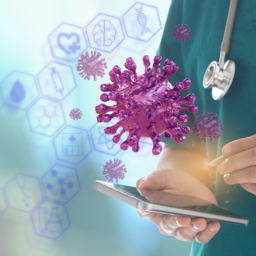
When faced with health challenges after exposure to Sars-Cov-2 or one of the vaccines, there are many areas of one’s health and lifestyle to take into consideration. The following lists of baseline tests, lifestyle modifications, professional-grade supplements, and other therapies are some of the important considerations that your doctor and you may want to look into. Dr. Jim Meyer, PharmD, CCN has compiled this information based on his extensive research as well as his own clinical observations. Please consult your qualified healthcare professional for any medical advice, diagnosis, or treatment.
Baseline Tests
Where clinically indicated, the following tests should be considered:
- CBC with differential and platelet count
- CMP with liver function tests
- D-Dimer as a marker of clotting activation
- CRP as a marker of ongoing inflammation
- Morning cortisol to assess adrenal function
- Troponin and pro-BNP to exclude ongoing cardiac disease
- Coinfection testing, CMV, EBV, HSV, to rule out reactivation of other viruses Vitamin D (25 OH vitamin D)
- ANA and autoantibodies may also need to be tested for to rule out new or reactivated auto-immune activity
- Thyroid panel to rule out thyroid disease
- Homocysteine level
- HbA1c to rule out diabetes
Diet & Lifestyle Considerations
Lifestyle modifications may greatly improve recovery time and help to minimize symptoms. It is important to move towards an anti-inflammatory diet (ie. Paleo, Keto, eliminating gluten, dairy, and processed sugar). Eat real (not processed) food, as in meat, vegetables, fruit, seeds and nuts. Avoid any foods that you know you are allergic to or sensitive to. Avoid processed foods. Avoid artificial sweeteners and high fructose corn syrup.
Intermittent fasting/time-restricted eating can be beneficial for improving autophagy, cellular recycling, rebuilding, and cellular healing. Intermittent fasting days should be non-consecutive initially: Monday, Wednesday, and Friday, for example. The fasting window can start at 8 hours and gradually increase to 12-16 hours. Note: It is important to consult your doctor or nutritionist to determine if this would be safe for you.
It is essential to stay hydrated. Aim to drink at least a half ounce of water per pound of body weight per day, unless you are fluid restricted by your physician or morbidly obese. (Check with your physician if either of these restrictions apply to you). For example, if you weigh 150 pounds, the goal would be to drink 75 ounces of water.
Moderate physical activity helps with recovery, as it improves mitochondrial recovery and energy production. The goal should be moderate activity to tolerable levels that do not worsen symptoms. Stretching and low-level resistance exercises are preferred initially over aerobic exercise to reduce the amount of oxidative stress. Keeping the heart rate below 110 beats per minute initially is ideal. As symptoms and recovery rate improve, the amount of exercise can be adjusted.
Seven and a half to eight hours of quality sleep per night is recommended to improve recovery time.
Nutritional Supplemental Support
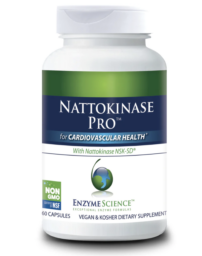
If CRP and D-Dimer testing provides evidence of blood vessel inflammation or the potential for abnormal clotting, systemic enzymes may be of value. Nattokinase has potent fibrinolytic, antithrombotic, and antiplatelet activity. Typical dosing is (4000-8000 FU) twice daily. Lumbrokinase (Bulouke) is another systemic enzyme with similar activity. Typical dosing is (300,000 to 600,000 IU) per day.
Nattokinase has been more extensively used because there have been more clinical studies done with it to establish safety and efficacy. I like to use Neprinol (AFD). It is a combination of nattokinase, serrapeptase, lipase, bromelain, and papain for inflammation and fibrinolytic activity to maintain normal blood viscosity. It is also useful for workout recovery. Dosing is 2 capsules twice daily on an empty stomach. The dose can be increased to 6-8 capsules per day if symptoms and lab values warrant the increase.
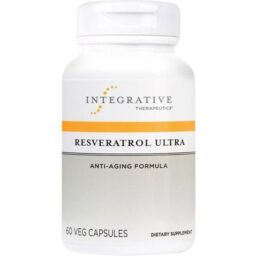
Resveratrol 400-500mg daily. Resveratrol (a beneficial compound found in red wine) most importantly activates autophagy. It also has anti-inflammatory, antiviral, antioxidant, and anticoagulant properties. Pterostilbene is a potent, better absorbed derivative of resveratrol with similar activity but a much longer half life and greater effect on oxidative stress. Resveratrol Ultra HP and Resveratin Plus are both resveratrol products combined with quercetin to enhance absorption and activity. Resveratin Plus also contains pterostilbene.
Spermidine 3-6mg daily. Spermidine, like resveratrol, has anti-inflammatory and antioxidant properties. It has been shown to preserve mitochondrial function (generation of the energy the cell needs) and reduce cardiovascular disease. It has also been shown to activate autophagy like resveratrol but through different metabolic pathways.
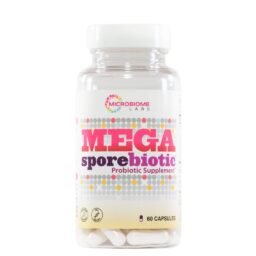
Melatonin has anti-inflammatory and antioxidant properties and is a potent regulator of mitochondrial function. The dose should be started at 1 mg extended release and increased as tolerated to 2-6 mg nightly. If the individual is a slow metabolizer higher doses may result in vivid dreams and daytime drowsiness.
Probiotics: Patients with post syndromes are usually dysbiotic with depletion of bifidobacterium resulting in low butyrate production in the gut. This reduction in short-chain fatty acid production results in reduced energy production and poor nutrient absorption. Suggested probiotics include Megasporbiotic, Visbiome, Triflora, and Therabiotic. The dose would start with 1 capsule nightly and increase to 1 capsule twice daily after a week.
NAC 600-2000mg per day. NAC effectively enhances circulating and cellular glutathione levels. It has a broad range of antioxidant, anti-inflammatory, and immune-modulating properties. It can be used in combination with s-acetyl glutathione or liposomal glutathione and vitamin-C in case glutathione production or recycling is genetically compromised.
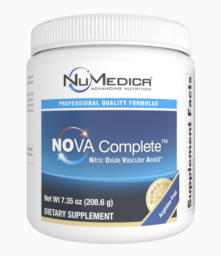
Nitric oxide support: COVID-19 patients have been shown to have suppressed endothelial nitric oxide synthase activity resulting in a deficiency of nitric oxide. The spike protein may play a major role in inhibiting this enzyme. Nitric oxide deficiency is a major factor causing endothelial dysfunction, and clotting abnormalities. Low plasma arginine levels have been observed post COVID-19 exposure and vaccine exposure. Activation of the nitric oxide cyclic GMP pathway has anti-inflammatory effects. It modulates activated T-cells, reduces cytokine (cells affecting the immune system) release, and stimulates vascular (blood vessel) repair. NOVA Complete is a comprehensive nitric oxide support product containing beetroot and L-citrulline as substrates for nitric oxide conversion. It also contains hawthorn for improving activity of nitric oxide synthase. It contains chlorogenic acid and grape seed extract for antioxidant and anti-inflammatory effects in the vasculature. L-Citrulline is used instead of L-Arginine because L-citrulline has been shown to increase cellular arginine levels more efficiently than giving oral L-arginine without the contraindications that come with L-arginine supplementation. The dose of NOVA complete is one scoop daily in water or juice. If oxygen saturation is compromised, one scoop twice daily is recommended.
Mitochondrial support: Compromised mitochondrial function has been seen both post infection and post vaccination. Extra support to enhance mitochondrial recovery may be necessary. ATP-360 contains coenzyme Q10 and NADH to support ATP (energy) production both aerobically and anaerobically. It also contains pyrroloquinoline quinone (PqQ) for mitochondrial renewal. Phospholipid matrix is included to support the mitochondrial membrane and r-lipoic acid is included to reduce oxidative stress. The daily dose is 3 capsules.
Liver Support: The liver may be compromised due to inflammation or heavily burdened, clearing metabolic waste, inflammatory mediators, oxidative stress etc. Dual-Tox DPO is designed to support and balance Phase I and II liver detoxification. The dose is 4 capsules daily.
Vitamin C has anti-inflammatory, antioxidant, and immune modulating properties. It also helps promote the growth of beneficial bacteria in the microbiome (the group of microorganisms in the body that helps with digestion, destroys harmful bacteria, and helps control your immune system). A dose of 1000 mg orally 2 to 3 times daily is recommended.
Vitamin D3 (4000-5000 units/day) with vitamin K2 (100mcg/day). This can be adjusted based on the baseline Vitamin D level.
Omega 3 fatty acids have anti-inflammatory and cardio-protective effects. They improve endothelial function, limit vascular inflammation, reduce thrombosis (blood clotting), and reduce free radical (unstable, damaging molecule) production. A combination of EPA/DHA is recommended with a starting dose of 2000mg increasing up to 4000 mg daily as tolerated.
Additional Therapeutic Considerations
It seems simple, but exposure to sunlight for even 30 minutes per day has been shown to be immunomodulatory and increase ATP production.
Red light therapy has been shown to have similar effects if one needs to limit UV exposure.
Hyperbaric oxygen therapy has been shown to decrease inflammatory cytokines while increasing IL-10 (an anti-inflammatory cytokine). It has also been shown to improve mitochondrial function and improve tissue oxygenation.
Supplementation should be based on analysis of symptoms and lab work in partnership with a qualified healthcare practitioner to optimize support. Dr. Jim Meyer, PharmD, CCN has helped many individuals struggling with complex medical issues and diagnoses find healing and recovery in their journey towards optimal health. He is available for virtual as well as in-person consultations at Peoples Rx.
If you have comments and/or questions about this blog, email us at blog@peoplesrx.com.
References:
- Sumi H, Hamada H, Tsushima H, Mihara H. A novel fibrinolytic enzyme (nattokinase) in the vegetable cheese Natto; a typical and popular food in Japanese diet. Experientia 1987;43:1110-1111.
- Weng Y, Yao J, Sparks S, Wang KY. Nattokinase: An oralantithrombotic agent for the prevention of cardiovascular disease. Int J Mol Sci 2017;18:523
- Dabbagh F, Negahdaripour M, BerenjianA, Behfar A, Mohammadi F, Zamani M. Nattokinase: production and application. Applied Microbiology and Biotechnology 2014; 98:9199-9206.
- Nagata C, Wada K, Tamura T, Konishi K, Goto Y, Koda S et al. Dietary soy and natto intake and cardiovascular disease mortality in Japanese adults: the Takayama study. Am J Clin Nutr 2017;105:426-631
- Sumi H, Hamada H, Nakanishi K, Hiratani H. Enhancement of the fibrinolytic activity in plasma by oral administration of nattokinase. Acta Haematol 1990; 84:139-143
- Hsia CH, Shen MC, Lin JS, Wen YK, Hwang KL, Cham TM, Yang NC. Nattokinase decreases plasma levels of fibrinogen, factor VII, and factor VIII in human subjects. Nutr Res. 2009 Mar;29(3):190-6. doi: 10.1016/j.nutres.2009.01.009. PMID: 19358933.
- Kurosawa Y, Nirengi S, Homma T, Esaki K, Ohta M, Clark JF, Hamaoka T. A single-dose of oral nattokinase potentiates thrombolysis and anti-coagulation profiles. Sci Rep. 2015 Jun 25;5:11601. doi: 10.1038/srep11601. PMID: 26109079; PMCID: PMC4479826.
- Metkar SK, Girigoswami A, Vijayashree R, Girigoswami K. Attenuation of subcutaneous insulin induced amyloid mass in vivo using Lumbrokinase and Serratiopeptidase. Int J Biol Macromol. 2020 Nov 15;163:128-134. doi: 10.1016/j.ijbiomac.2020.06.256. Epub 2020 Jun 29. PMID: 32615214.
- MetkarSK, Girigoswami A, Murugesan R, Girigoswami K. Lumbrokinase for degradation and reduction of amyloid fibriles associated with amyloidosis. Journal of applied Biomedicine 2017;15:96-104.
- Metkar SK, Girigoswami A, Bondage DD, Shinde UG, Girigoswami K. The potential of lumbrokinase and serratiopeptidase for the degradation of Aβ 1-42 peptide – an in vitro and in silico approach. Int J Neurosci. 2022 Jun 27:1-12. doi: 10.1080/00207454.2022.2089137. Epub ahead of print. PMID: 35694981.
- Chen Y, Liu Y, Zhang J, Zhou K, Zhang X, Dai H, Yang B, Shang H. Efficacy and safety of lumbrokinase plus aspirin versus aspirin alone for acute ischemic stroke (LUCENT): study protocol for a multicenter randomized controlled trial. Trials. 2022 Apr 11;23(1):285. doi: 10.1186/s13063-022-06200-4. PMID: 35410433; PMCID: PMC8996506.
- Fung J, Moore J. The Guide to fasting. Victory Belt Publishing; 2016.
- de Cabo R, Mattson MP. Effects of Intermittent Fasting on Health, Aging, and Disease. N Engl J Med. 2019 Dec 26;381(26):2541-2551. doi: 10.1056/NEJMra1905136. Erratum in: N Engl J Med. 2020 Jan 16;382(3):298. Erratum in: N Engl J Med. 2020 Mar 5;382(10):978. PMID: 31881139.
- Hannan MA, Rahman MA, Rahman MS, Sohag AAM, Dash R, Hossain KS, Farjana M, Uddin MJ. Intermittent fasting, a possible priming tool for host defense against SARS-CoV-2 infection: Crosstalk among calorie restriction, autophagy and immune response. Immunol Lett. 2020 Oct;226:38-45. doi: 10.1016/j.imlet.2020.07.001. Epub 2020 Jul 10. PMID: 32659267; PMCID: PMC7351063.
- Zhao Y, Jia M, Chen W, Liu Z. The neuroprotective effects of intermittent fasting on brain aging and neurodegenerative diseases via regulating mitochondrial function. Free Radic Biol Med. 2022 Mar;182:206-218. doi: 10.1016/j.freeradbiomed.2022.02.021. Epub 2022 Feb 24. PMID: 35218914.
- Beckman JA. Thrombolytic therapy for pulmonary embolism. JAMA. 2014 Jun 18;311(23):2385-6. doi: 10.1001/jama.2014.5993. PMID: 24938561.
- Cheng CW, Adams GB, Perin L, Wei M, Zhou X, Lam BS, Da Sacco S, Mirisola M, Quinn DI, Dorff TB, Kopchick JJ, Longo VD. Prolonged fasting reduces IGF-1/PKA to promote hematopoietic-stem-cell-based regeneration and reverse immunosuppression. Cell Stem Cell. 2014 Jun 5;14(6):810-23. doi: 10.1016/j.stem.2014.04.014. Erratum in: Cell Stem Cell. 2016 Feb 4;18(2):291-2. PMID: 24905167; PMCID: PMC4102383.
- Hine C, Mitchell JR. Saying no to drugs: fasting protects hematopoietic stem cells from chemotherapy and aging. Cell Stem Cell. 2014 Jun 5;14(6):704-5. doi: 10.1016/j.stem.2014.05.016. PMID: 24905161; PMCID: PMC4278638.
- Poenaru S, Abdallah SJ, Corrales-Medina V, Cowan J. COVID-19 and post-infectious myalgic encephalomyelitis/chronic fatigue syndrome: a narrative review. Ther Adv Infect Dis. 2021 Apr 20;8:20499361211009385. doi: 10.1177/20499361211009385. PMID: 33959278; PMCID: PMC8060761.
- Raman B, Cassar MP, Tunnicliffe EM, Filippini N, Griffanti L, Alfaro-Almagro F, Okell T, Sheerin F, Xie C, Mahmod M, Mózes FE, Lewandowski AJ, Ohuma EO, Holdsworth D, Lamlum H, Woodman MJ, Krasopoulos C, Mills R, McConnell FAK, Wang C, Arthofer C, Lange FJ, Andersson J, Jenkinson M, Antoniades C, Channon KM, Shanmuganathan M, Ferreira VM, Piechnik SK, Klenerman P, Brightling C, Talbot NP, Petousi N, Rahman NM, Ho LP, Saunders K, Geddes JR, Harrison PJ, Pattinson K, Rowland MJ, Angus BJ, Gleeson F, Pavlides M, Koychev I, Miller KL, Mackay C, Jezzard P, Smith SM, Neubauer S. Medium-term effects of SARS-CoV-2 infection on multiple vital organs, exercise capacity, cognition, quality of life and mental health, post-hospital discharge. EClinicalMedicine. 2021 Jan 7;31:100683. doi: 10.1016/j.eclinm.2020.100683. PMID: 33490928; PMCID: PMC78089
- Booth NE, Myhill S, McLaren-Howard J. Mitochondrial dysfunction and the pathophysiology of Myalgic Encephalomyelitis/Chronic Fatigue Syndrome (ME/CFS). Int J Clin Exp Med. 2012;5(3):208-20. Epub 2012 Jun 15. PMID: 22837795; PMCID: PMC3403556.
- Wood E, Hall KH, Tate W. Role of mitochondria, oxidative stress and the response to antioxidants in myalgic encephalomyelitis/chronic fatigue syndrome: A possible approach to SARS-CoV-2 ‘long-haulers’? Chronic Dis Transl Med. 2021 Mar;7(1):14-26. doi: 10.1016/j.cdtm.2020.11.002. Epub 2020 Nov 21. PMID: 33251031; PMCID: PMC7680046.
- Brown JT, Saigal A, Karia N, Patel RK, Razvi Y, Constantinou N, Steeden JA, Mandal S, Kotecha T, Fontana M, Goldring J, Muthurangu V, Knight DS. Ongoing Exercise Intolerance Following COVID-19: A Magnetic Resonance-Augmented Cardiopulmonary Exercise Test Study. J Am Heart Assoc. 2022 May 3;11(9):e024207. doi: 10.1161/JAHA.121.024207. Epub 2022 Apr 26. PMID: 35470679; PMCID: PMC9238618.
- Gligorijević N, Stanić-Vučinić D, Radomirović M, Stojadinović M, Khulal U, Nedić O, Ćirković Veličković T. Role of Resveratrol in Prevention and Control of Cardiovascular Disorders and Cardiovascular Complications Related to COVID-19 Disease: Mode of Action and Approaches Explored to Increase Its Bioavailability. Molecules. 2021 May 11;26(10):2834. doi: 10.3390/molecules26102834. PMID: 34064568; PMCID: PMC8151233.
- Pandey P, Rane JS, Chatterjee A, Kumar A, Khan R, Prakash A, Ray S. Targeting SARS-CoV-2 spike protein of COVID-19 with naturally occurring phytochemicals: an in silico study for drug development. J Biomol Struct Dyn. 2021 Oct;39(16):6306-6316. doi: 10.1080/07391102.2020.1796811. Epub 2020 Jul 22. PMID: 32698689; PMCID: PMC7441770.
- de Sá Coutinho D, Pacheco MT, Frozza RL, Bernardi A. Anti-Inflammatory Effects of Resveratrol: Mechanistic Insights. Int J Mol Sci. 2018 Jun 20;19(6):1812. doi: 10.3390/ijms19061812. PMID: 29925765; PMCID: PMC6032205.
- Park D, Jeong H, Lee MN, Koh A, Kwon O, Yang YR, Noh J, Suh PG, Park H, Ryu SH. Resveratrol induces autophagy by directly inhibiting mTOR through ATP competition. Sci Rep. 2016 Feb 23;6:21772. doi: 10.1038/srep21772. PMID: 26902888; PMCID: PMC4763238.
- Saeedi-Boroujeni A, Mahmoudian-Sani MR. Anti-inflammatory potential of Quercetin in COVID-19 treatment. J Inflamm (Lond). 2021 Jan 28;18(1):3. doi: 10.1186/s12950-021-00268-6. PMID: 33509217; PMCID: PMC7840793.
- Molina-Carballo A, Palacios-López R, Jerez-Calero A, Augustín-Morales MC, Agil A, Muñoz-Hoyos A, Muñoz-Gallego A. Protective Effect of Melatonin Administration against SARS-CoV-2 Infection: A Systematic Review. Curr Issues Mol Biol. 2021 Dec 22;44(1):31-45. doi: 10.3390/cimb44010003. PMID: 35723382; PMCID: PMC8929125.
- Hasan ZT, Atrakji DMQYMAA, Mehuaiden DAK. The Effect of Melatonin on Thrombosis, Sepsis and Mortality Rate in COVID-19 Patients. Int J Infect Dis. 2022 Jan;114:79-84. doi: 10.1016/j.ijid.2021.10.012. Epub 2021 Oct 12. PMID: 34653660; PMCID: PMC8506572.
- Lindqvist PG, Epstein E, Landin-Olsson M, Ingvar C, Nielsen K, Stenbeck M, Olsson H. Avoidance of sun exposure is a risk factor for all-cause mortality: results from the Melanoma in Southern Sweden cohort. J Intern Med. 2014 Jul;276(1):77-86. doi: 10.1111/joim.12251. Epub 2014 Apr 23. PMID: 24697969.
- Pereira PC, de Lima CJ, Fernandes AB, Zângaro RA, Villaverde AB. Cardiopulmonary and hematological effects of infrared LED photobiomodulation in the treatment of SARS-COV 2. J Photochem Photobiol B. 2023 Jan;238:112619. doi: 10.1016/j.jphotobiol.2022.112619. Epub 2022 Dec 5. PMID: 36495670; PMCID: PMC9721157.
- Gutiérrez-Castrellón P, Gandara-Martí T, Abreu Y Abreu AT, Nieto-Rufino CD, López-Orduña E, Jiménez-Escobar I, Jiménez-Gutiérrez C, López-Velazquez G, Espadaler-Mazo J. Probiotic improves symptomatic and viral clearance in Covid19 outpatients: a randomized, quadruple-blinded, placebo-controlled trial. Gut Microbes. 2022 Jan-Dec;14(1):2018899. doi: 10.1080/19490976.2021.2018899. PMID: 35014600; PMCID: PMC8757475.
- Zuo T, Wu X, Wen W, Lan P. Gut microbiome alterations in COVID-19. Genomics, Proteomics & Bioinformatics2021.
- Madeo F, Eisenberg T, Pietrocoloa F, Kroemer G. Spermidine in health and disease. Science 2018; 359:410
- Eisenberg T, Abdellatif M, Schroeder S, Primessnig U, Stekovic S, Pendl T, Harger A, Schipke J, Zimmermann A, Schmidt A, Tong M, Ruckenstuhl C, Dammbrueck C, Gross AS, Herbst V, Magnes C, Trausinger G, Narath S, Meinitzer A, Hu Z, Kirsch A, Eller K, Carmona-Gutierrez D, Büttner S, Pietrocola F, Knittelfelder O, Schrepfer E, Rockenfeller P, Simonini C, Rahn A, Horsch M, Moreth K, Beckers J, Fuchs H, Gailus-Durner V, Neff F, Janik D, Rathkolb B, Rozman J, de Angelis MH, Moustafa T, Haemmerle G, Mayr M, Willeit P, von Frieling-Salewsky M, Pieske B, Scorrano L, Pieber T, Pechlaner R, Willeit J, Sigrist SJ, Linke WA, Mühlfeld C, Sadoshima J, Dengjel J, Kiechl S, Kroemer G, Sedej S, Madeo F. Cardioprotection and lifespan extension by the natural polyamine spermidine. Nat Med. 2016 Dec;22(12):1428-1438. doi: 10.1038/nm.4222. Epub 2016 Nov 14. PMID: 27841876; PMCID: PMC5806691.
- Izquierdo JL, Soriano JB, González Y, Lumbreras S, Ancochea J, Echeverry C, Rodríguez JM. Use of N-Acetylcysteine at high doses as an oral treatment for patients hospitalized with COVID-19. Sci Prog. 2022 Jan-Mar;105(1):368504221074574. doi: 10.1177/00368504221074574. PMID: 35084258; PMCID: PMC8795755.
- Serhan CN. Pro-resolving lipid mediators are leads for resolution physiology. Nature. 2014 Jun 5;510(7503):92-101. doi: 10.1038/nature13479. PMID: 24899309; PMCID: PMC4263681.
- Yoon JK, Frankel AE, Feun LG, Ekmekcioglu S, Kim KB. Arginine deprivation therapy for malignant melanoma. Clin Pharmacol. 2013;5:11-9. doi: 10.2147/CPAA.S37350. Epub 2012 Dec 27. PMID: 23293541; PMCID: PMC3534294.
- Miranda-Massari JR, Toro AP, Loh D, Rodriguez JR, Borges RM, Marcial-Vega V, Olalde J, Berdiel MJ, Riordan NH, Martinez JM, Gil A, Gonzalez MJ. The Effects of Vitamin C on the Multiple Pathophysiological Stages of COVID-19. Life (Basel). 2021 Dec 3;11(12):1341. doi: 10.3390/life11121341. PMID: 34947872; PMCID: PMC8708699.
- Robbins T, Gonevski M, Clark C, Baitule S, Sharma K, Magar A, Patel K, Sankar S, Kyrou I, Ali A, Randeva HS. Hyperbaric oxygen therapy for the treatment of long COVID: early evaluation of a highly promising intervention. Clin Med (Lond). 2021 Nov;21(6):e629-e632. doi: 10.7861/clinmed.2021-0462. PMID: 34862223; PMCID: PMC8806311.
- Kjellberg A, De Maio A, Lindholm P. Can hyperbaric oxygen safely serve as an anti-inflammatory treatment for COVID-19? Med Hypotheses. 2020 Nov;144:110224. doi: 10.1016/j.mehy.2020.110224. Epub 2020 Aug 30. PMID: 33254531; PMCID: PMC7456590.
- Tezgin D, Giardina C, Perdrizet GA, Hightower LE. The effect of hyperbaric oxygen on mitochondrial and glycolytic energy metabolism: the caloristasis concept. Cell Stress Chaperones. 2020 Jul;25(4):667-677. doi: 10.1007/s12192-020-01100-5. Epub 2020 Apr 6. PMID: 32253741; PMCID: PMC7332662.
- Hamilton D, Jensen GS. Nutraceutical Support of Mitochondrial Function Associated With Reduction of Long-term Fatigue and Inflammation. Altern Ther Health Med. 2021 May;27(3):8-18. PMID: 33882028.
- Chowanadisai W, Bauerly KA, Tchaparian E, Wong A, Cortopassi GA, Rucker RB. Pyrroloquinoline quinone stimulates mitochondrial biogenesis through cAMP response element-binding protein phosphorylation and increased PGC-1alpha expression. J Biol Chem. 2010 Jan 1;285(1):142-52. doi: 10.1074/jbc.M109.030130. Epub 2009 Oct 27. PMID: 19861415; PMCID: PMC2804159.
Disclaimer: These statements have not been evaluated by the Food and Drug Administration. These products are not intended to diagnose, treat, cure or prevent any disease. This article is based upon the opinions of the respective author, who retains copyright as marked. The information on this website is not intended to replace a one-on-one relationship with a qualified health care professional and is not intended as medical advice. It is intended as a sharing of knowledge and information from the research and experience of the author. Peoples Rx encourages you to make your own health care decisions based upon your research and in partnership with a qualified healthcare professional. If you are pregnant, nursing, taking medication, or have a medical condition, consult your health care professional before using products based on this content.
